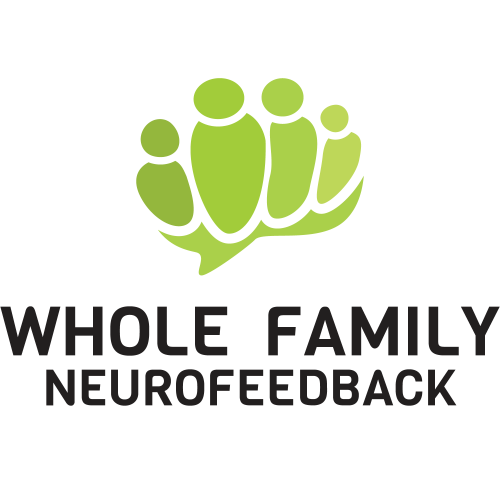It is the one thing that I kept coming back to, or rather, that kept coming back to me—a seemingly inescapable state of just-not-feeling-well. For 15 years. Actually, my saga was longer than that, but when my children were born it seemed to get worse. Or maybe it was just more noticeable with all the demands of mothering. I just couldn’t keep up.
“I come back to the one thing I know. There is my body, sitting here on the edge of the bed, trembling and sweating.”
-John M. Hull
I’ll spare you the list. It’s really long. As is the list of every god blessed thing I tried in order to move towards wellness. I have spent thousands—and truth be told—probably tens of thousands over these many years chasing one mysterious feeling after another. Sometimes some things worked for a little while. But inevitably, I’d be going along with my day, and I’d crash. Out of the clear blue. And productivity would go out the window. As would my mood. And slowly, over time, my hope that my physical life could be back to what it once was.
Until one Spring afternoon at a leadership conference in D.C.

Being around really smart, really good people has a way of making me take stock. And I realized I had to find a different way of looking at and dealing with my physical, mental, and emotional problems. It was getting in the way of the most important things I wanted to accomplish in my life. I needed a different perspective—instead of my unsuccessful piece meal approach that had me chasing one feeling after another. I needed a big picture, forest for the trees, top down kind of approach. I needed to get out in front of it—like a leader might. That was when I decided to try neurofeedback training.
Stress is a major factor.
“Reason elevates our thoughts as high as the stars, and leads us through the vast space of this mighty fabric; yet it comes far short of the real extent of our corporeal being.”
-Samuel Johnson
I had already learned that stress was a major factor. And I knew that stress was a major factor in what I was feeling. I also had learned that reducing it wasn’t enough by itself. I knew that my resiliency was a major factor. In other words, not everyone responds the same way to the same stressors, so it’s not just a matter of the quantity of stress a person has, but also a matter of the quality of response.
My physiological response to stress was automatic and felt beyond my control. What doctors call “the break system” in the autonomic stress response was squeaky at best for me. In other words, once I felt stress, my body had a hard time getting from amped-up-mode to normal-operating-procedure-mode. I knew I could support my “break system” through therapy, meditation, spending time with my family, and other methods, and these things were certainly helping—but not enough.
Leadership and stress
Sitting at that leadership conference, I started to ask myself: What was going on with the leadership functions in my body? Does it make sense to think of the body as having a leadership system within itself? There is certainly an intelligence at work—something that directs the whole damn thing and keeps it alive. But what are the mechanisms for this intelligence? Through what systems does it direct itself?

In profound ways, the brain is the mechanism for the intelligence that animates our bodies and our lives. It’s not called the “Central” Nervous System for nothing! The brain is command central when it comes to stress. It sends signals through the CNS for the body to respond in ways it sees as the most adaptive for any given stressor or threat. I discovered that nonlinear neurofeedback training works with the CNS in ways that not a lot else does. It gives the brain feedback regarding the pattern it is in, the frequencies that it is using for any given task. This is hard to explain, and there are a lot of really smart people who have been looking at this for decades who can do it a lot more justice than me. Suffice it to say…
…Suffice it to say that nonlinear neurofeedback is a way of holding up a mirror to your brain. Your brain normally can’t see itself. It can’t see if it’s slouching or sitting up straight or eating a watermelon. When it can see it is slouching, it self- corrects, much like we would if we saw ourselves slouching in the mirror. Automatically, and without much effort.
 The brain likes efficiency and hates wasting energy. It wants to run better. What an incredibly cool concept! This intelligence that lies in every one of us. There for us. And it looks like we are now able to tap into this extraordinary mental, emotional power via nonlinear neurofeedback.
The brain likes efficiency and hates wasting energy. It wants to run better. What an incredibly cool concept! This intelligence that lies in every one of us. There for us. And it looks like we are now able to tap into this extraordinary mental, emotional power via nonlinear neurofeedback.
What I experienced
After my first session I had a mild headache that went away after lying down for 30 minutes. I felt kind of spacey the rest of the day, but otherwise fine. After the next few sessions I felt on the happy and silly side. As my brain training deepened, I noticed I had an easier time getting out of bed in the mornings. I actually felt rested for the first time in many years. A whole cascade of improvements followed including significantly more digestive resilience, more stable energy, less perseverating, more creativity, and happiness. Waves of happiness started to come over me. Like, actual waves. After 6 weeks of brain training, I was well on my way back—to me.
Ahhhhh…

I found a way to harness my brain’s own innate intelligence to help with the quality of response I was having to stress. Because the brain is a leader and not a dictator, and because neurofeedback training is not a panacea, I still have to mind my body. I still have to exercise (something neurofeedback training has helped me with a great deal), eat right, tend to my relationships, and occasionally visit my acupuncturist and massage therapist. But, hey, I am not complaining! (And my bank account is pretty happy about it too!)
I now come back to the one thing I know. The one thing that keeps coming back to me.
Hope.
Anyone who can relate to the kinds of challenges I’ve written about here knows what a big deal hope is.
“Hope is a good thing. Maybe the best of good things. And no good thing ever dies.”
-Red from Shawshank Redemption
For more stories from my family check out our daughter’s experience with it here.
For our FAQs page, you can access that here.
